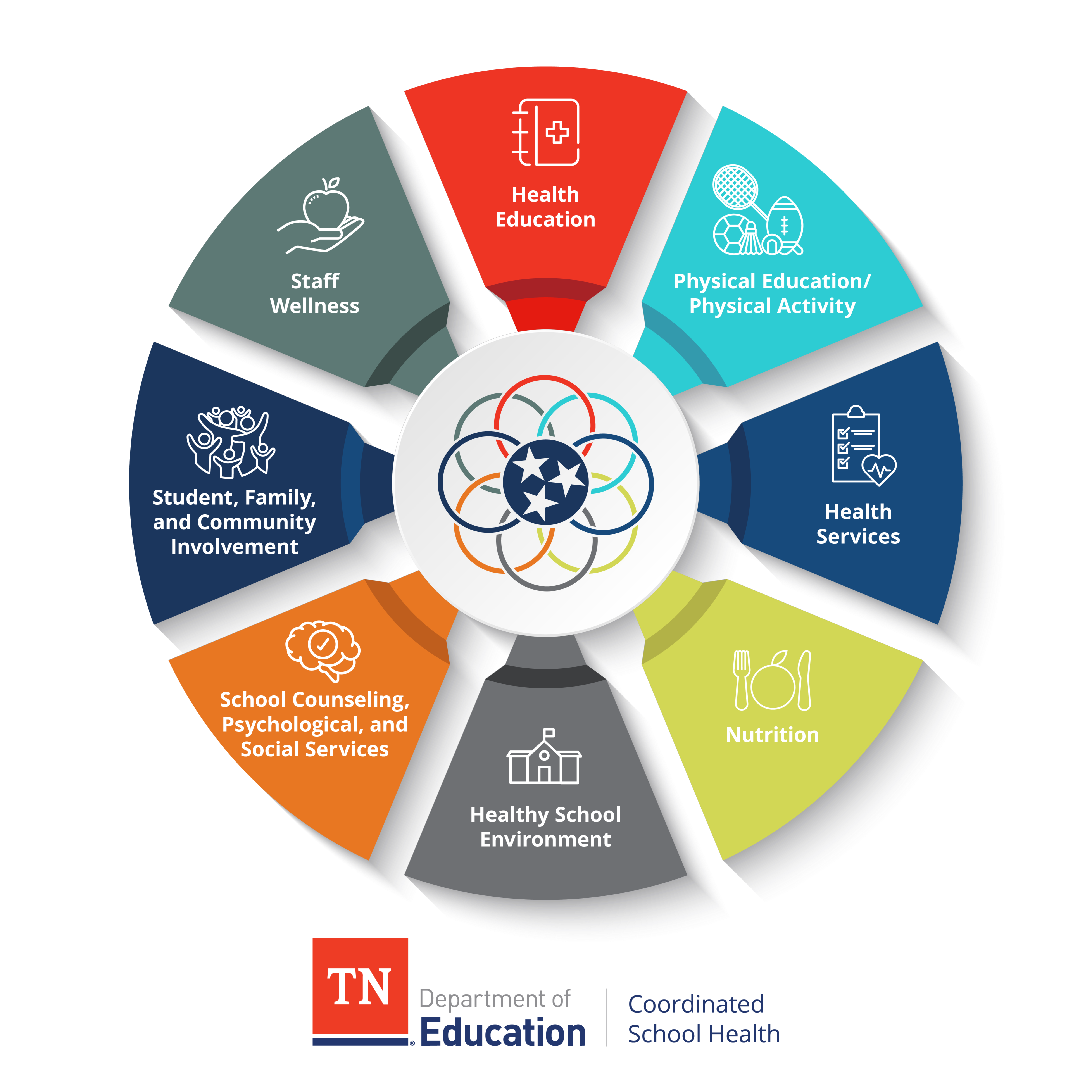Coordinated School Health
The Coordinated School Health model was developed by the Centers for Disease Control and Prevention in 1988. It is designed to connect health (physical, emotional and social) with education. This coordinated approach improves students' health and their capacity to learn through the support of families, communities and schools working together. The CSH approach consists of eight major components. By definition, all Coordinated School Health components work together to improve the lives of students and their families. Although these components are listed separately, it is their composite that allows CSH to have significant impact.
The eight components of Coordinated School Health include:
Health Education
Physical Education/Physical Activity
Health Services
Nutrition Services
Health Promotion for Staff
Counseling and Psychological Services
Healthy School Environment
Student/Parent/Community Involvement
Tennessee Department of Education’s Office of Coordinated School Health Website
About Coordinated School Health
Our Mission:
The mission of Coordinated School Health is to improve students’ health and their capacity to learn through the support of families, communities and schools.
Goals:
Establish and maintain state and local partnerships necessary to implement the CSH model statewide.
Create awareness about the importance of students’ health and wellness to their academic success and prospects for future work.
Maximize the ability of each school community to adopt and implement the CSH model by providing resources, materials and technical assistance to meet the needs of that school community.
Promote a healthy school environment in all Tennessee school communities.
Provide annual evaluation and needs assessment for monitoring CSH in each school community.
CSH Outcomes:
Reduced Absenteeism
Improved nurse-to-student ratios resulting in increased class time
Increased access to health care services
Increased health education and physical activity
We believe:
Adults and students in a school community can take action to protect and enhance students’ health by providing a healthy school environment and using effective health education strategies.
It is vital to take a dual approach to students’ health by reducing students’ high-risk behaviors and increasing students’ capacity to effectively deal with current and future health challenges.
It is important to help students acquire the necessary knowledge, skills, and attitudes to make informed decisions about their health.
Health has three interconnected components – physical, social and emotional.
Student health is influenced on three different fronts – school, family and community.
School Athletics Reminders for Coaches, Athletes, and Parents


